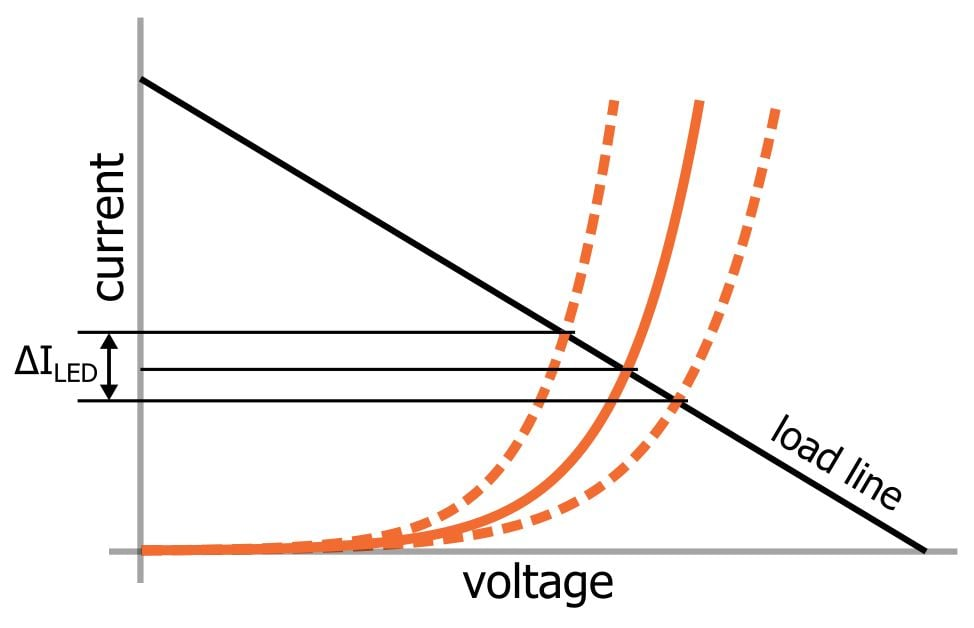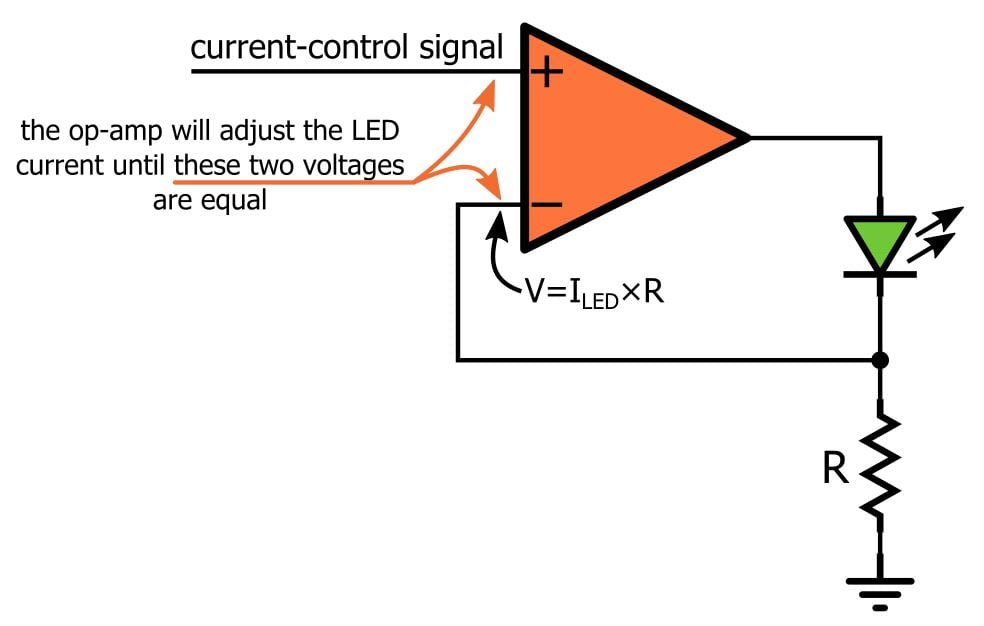The constant parameters here are V DD and R Series; then, the current is determined by the intersection of the load line and the diode characteristic curve. The change of the curve (of course, the curve of each component is not the same) may cause the current change.

This method is completely suitable for various non -key LED applications. However, there are inherent weaknesses that do not actually control the circuit flowing through the LED. The reason is simple. As far as LED work is concerned, positive current is more important than forward voltage.
The brightness of the LED is determined by the positive current. When you understand the details in depth, this problem becomes a bit blurred, because according to the above index relationship, the forward voltage is related to the forward current. Therefore, it is difficult to separate the current from the voltage when considering the impact of brightness. However, it is meaningful to consider the current as determining the amount of brightness, because more or less linear relationships between the forward current and brightness are more direct and useful than the relationship between the forward voltage and the brightness. Therefore, if you want to accurately adjust the brightness, you need to control the current.
If it exceeds the maximum forward current, the LED may be damaged. Applying too much voltage is not a big problem, because after entering the more vertical part of the index current-voltage relationship, the voltage drop at both ends of the diode will not increase significantly. What is increased is not a voltage drop, but a positive current, which is the number of specifications in the data table.
When you need only a simple indicator, it is easy to abide by the maximum positive current specification -you can use the appropriate series resistance to make the current far lower than the limit. However, what if you want to maximize the luminous intensity of LEDs (that is, to get as many lights from a LED)?
In this case, you need to push the positive current to the maximum value and do this safely. The easiest way to achieve the constant current LED control is to use integrated circuits designed for this purpose -there are many. This type of device is available. These LED drives include a variety of useful functions; they can simplify your design and rely on energy -saving functions to help extend the battery life in portable applications.

For those who like to design circuits by themselves, the operational amplifier can provide adjustable Hengli LED drivers:
The negative feedback effect causes an increased or reduced output current, until the voltage at both ends of the resistor is matched with the control voltage of the input terminal to the same phase input terminal.
For more electronic components requirements,pls see:https://www.megasourceel.com/products.html